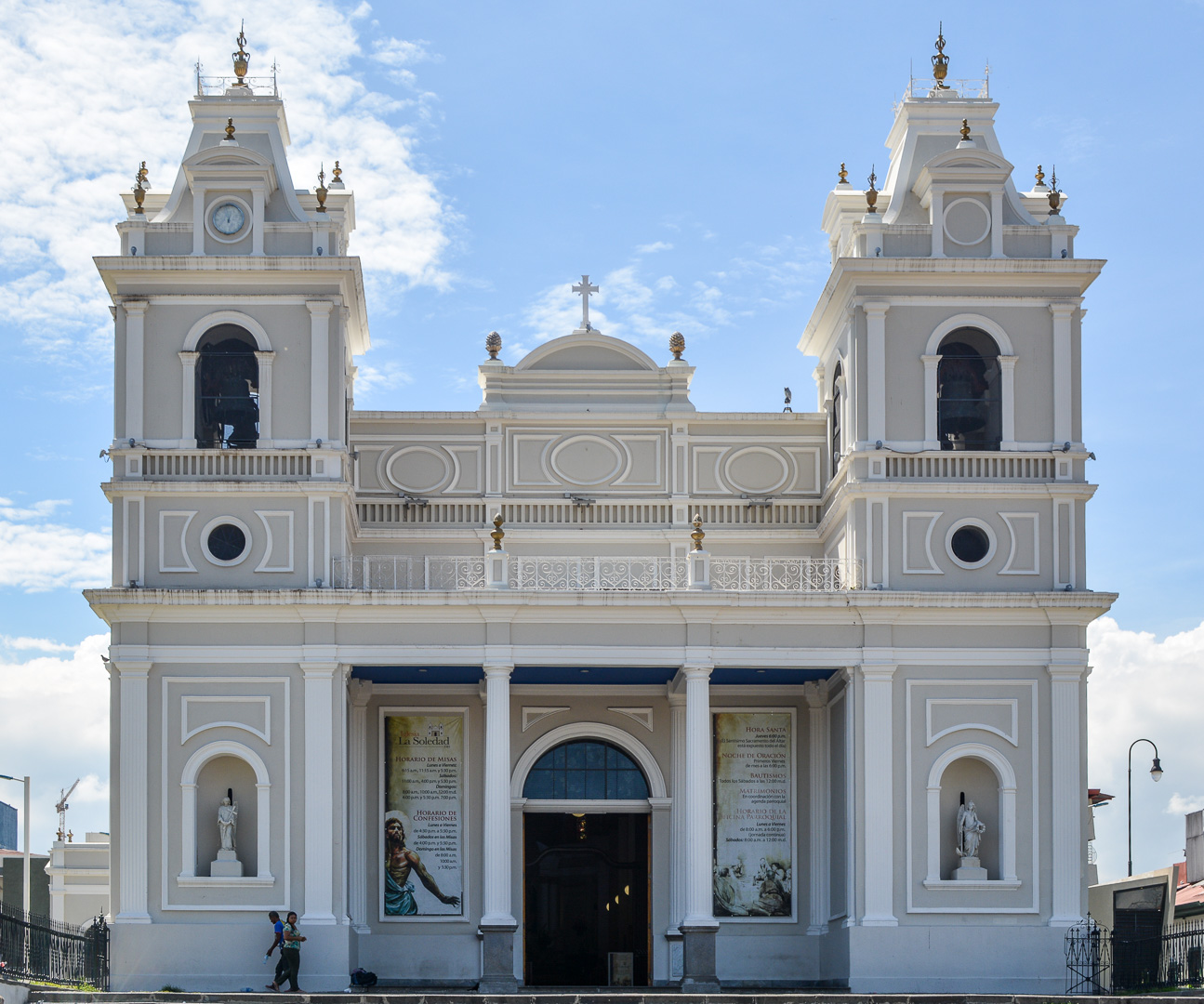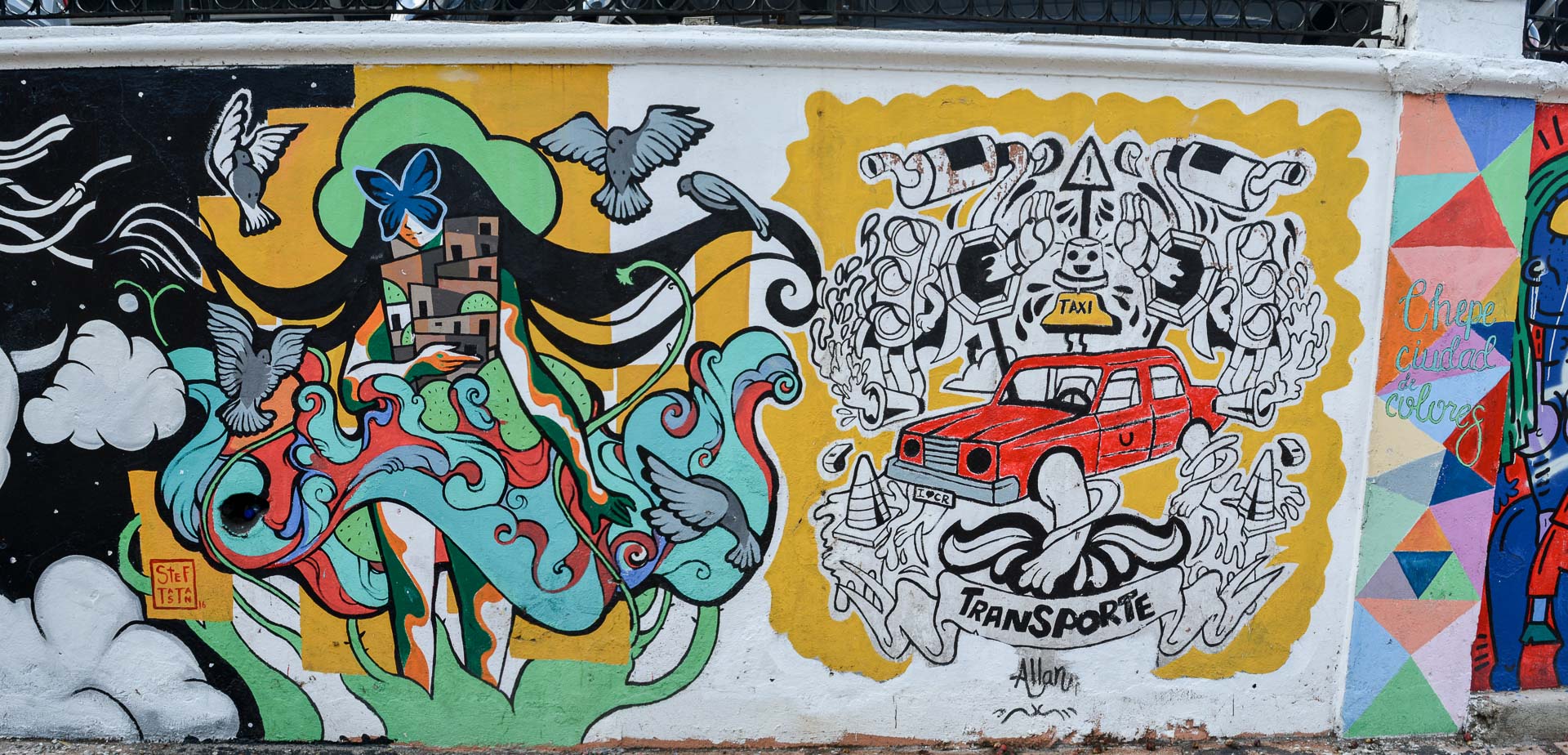Taking a Chance on San Jose
Our last stop in Costa Rica was San Jose. To be honest, we were not expecting much. We had heard that it was a dangerous city, and I personally felt uncomfortable staying in a city that was known for its pickpockets and streets that quickly turned from safe to unsafe by simply turning a corner. Bryan did a lot of research figuring out a safe area to make our home base for exploring the city. We ended up staying in a really neat neighborhood, Barrio Escalante. There seems to be a revolution happening among the young people of San Jose to revitalize their city and make it something to be proud of. This area was filled with little restaurants serving fantastic and creative food and some great places to hang out and have a drink or sip some excellent coffee. We enjoyed walking around the first day and exploring the different cafes and working on our blog while sipping some fantastic coffee. I think the strangest thing about Costa Rica was how well known they are for their coffee, yet most places we stayed at that provided coffee in the mornings had horrible coffee! When we would find somewhere that brewed coffee with care we got excited. Bryan used to brew our coffee back home in our Chemex (Thank you Danny and Stacey!!). So, who knows, maybe we became coffee snobs? Who knows…
Sculpture depicting a boy growing up
Anyways, the second day we decided to do the San Jose Free Walking Tour. Free walking tours are a good way to introduce yourself to any city and pick the brains of a local on some hidden gems in the city. Fair warning before you decide to do a free walking tour—they can be it or miss. If you get a local that is truly passionate about their city, it will be a hit. Many cities have multiple companies, so we always check reviews online (through TripAdvisor, Yelp, Facebook, etc.) and go for the most highly rated company. I’m glad we did for this tour because through reading the reviews we were warned of some local trying to pretend they worked for San Jose Free Walking Tour. He has a fake T-shirt with their company name and a similar logo and would try and deceive people into going on his “walking tour.” We read that the real walking tour would be lead by someone with a white umbrella with their logo stamped on the umbrella. We arrived at the meeting point about 10 minutes early, and our guide Carolina greeted us. We did see the fake guide though! He didn’t get anyone for his fake walking tour luckily, but he did throw an insult at Bryan and me. We were laughing at something related to our conversation, and he mistakenly thought we were laughing at him.
The first secondary education school for women in Costa Rica, founded in 1888
The Colegio Superior de Señoritas has a fascinating history with feminist movements in Costa Rica. In 1923, The director, teachers, and graduates of this school founded the Costa Rican Feminist League, the first solely feminist organization in the country, formed to press for women's suffrage.
The tour was our favorite to date. Carolina did a great job telling us the rich history of the city, some cultural knowledge, and excellent tips for things to do/see/eat in the city. We found San Jose to be incredibly fascinating by the end of the tour, and it helped us plan what we would do with the remaining days of our stay. We learned a little about the feminist movement against the “machismo” culture in Costa Rica. You see it’s not uncommon to walk down the street as a woman and get catcalled or stared at by men finding you attractive. It makes women feel unsafe and objectified, but the “machismo” culture calls it a “compliment.” I only experienced this when I went somewhere by myself without Bryan. I was used to getting stared at because, well, Bryan and I stood out, but the comments that came along with the stares made me feel unsafe at times. Funny enough, when he was around, no one bothered me. Women are fighting this culture more and more in Costa Rica, and in San Jose you will find feminist graffiti around the city expressing change in not only the catcalling, but sexual harassment, abuse in relationships, abortion, and other social issues.
La Soledad Church, one of the oldest churches in San Jose.
The controversial John Lennon statue was placed in the same area where locals burned Beatles merchandise in 1966 after John Lennon made a comment that the Beatles were "more popular than Jesus."
The cheapest high-rise building in San Jose! All concrete and square, an engineer's dream come true. You can see the architect tried to make some interesting design additions, but this is still a pretty ugly building...
Inside the National Theater
Throughout the tour, Carolina pointed out various buildings—all with vastly different architectural styles. Our favorite was the National Theater. It is an example of a conglomerate of European architecture. Basically, they just took what they liked of various architectural styles and put it together. Materials are from all over the world, and as a result you get a luxurious very European-looking building in the middle of San Jose. We ended up touring the theater the next day, and we really enjoyed the history behind it. Our favorite part was the ceiling mural. It was done by an Italian painter who had never been to Costa Rica, so he painted it based on what he heard of the area. As a result, there are multiple mistakes in the painting. See if you can find them below (answers are in the caption):
1.Banana bunch the man is holding are upside down 2.Coffee plants are growing on the beach—they actually grow in the mountains 3.The women picking the coffee look tall and fair-skinned, like Europeans, not like Costa Rican women at all 4.The men are working in some fancy clothes, right? That would not be the case in real life.
Another favorite part? The graffiti. Along Calle 17 (by Parque Nacional), amongst government buildings is a wall of graffiti art. The government allowed local artists to graffiti this wall as a way of expressing their political opinions. It’s an odd street for graffiti, as the street is a pristine stone promenade with European influenced government buildings in various pastel colors. The graffiti peppers the street with intense color as if the artist is yelling out to be heard. My favorite pieces are the ones that incorporate the edge of the previous artist’s art into their own piece creating a seamless transition from one message to the next.
Our next visit was the Jade Museum. Many people, including our waitress at Franco’s, mentioned their favorite museum in San Jose was the Jade Museum. Is it really a bunch of Jade artwork? Yes, but it’s so much more than that. It’s 4 floors of learning about the history and culture of Costa Rica through the various Jade sculptures, jewelry, and tools. You of course learn how Jade goes from a stone you would probably never notice in real life to an ornate piece of jewelry. You also learn about the indigenous culture—hunting, ceremonies, the animals they lived amongst, the jade trade, shamans, and agriculture.
Jade Museum
If you really want to immerse yourself into life in San Jose, walk up and down Avenida Central. This wide pedestrian road is filled with all different types of shops and restaurants. You’ll see street performers and people taking a break from work to get an ice cream cone. My favorite part was the Mercado Central indoor market. There’s no rhyme or reason to the organization of the stalls. It’s a maze of everything you need—from belts to shoes, hats, electronics, clothing, butchers, vegetable stalls, and ice cream. In fact, there’s one stall in this market that has been there since the early 1900’s. Lolo Mora has been making a unique-flavored ice cream (flavored with cinnamon, nutmeg, and cloves) there since early 1900 that is still popular amongst Costa Ricans. It’s a great place to go to for lunch. Pull yourself up on a stool at one of the stalls and eat some local cuisine with other Costa Ricans on their lunch break. Yes, I even found some vegan options at a few of the stalls!
Activists are also making a statement on some of the city’s famous statues. No, not to destroy them, but rather to draw attention that they are in desperate need of maintenance. Revitalizing the city does not solely mean demolishing the old to build the new. It means building new where needed, while preserving and highlighting the rich and interesting history of the city. It was exciting to see such passion and interest amongst the young people of San Jose. While San Jose is still not a place we recommend you walk aimlessly around, especially at night, we think it is worth a visit to experience for yourself not only the history, but experience how these young people are bringing change into the city.
A piece of the Berlin Wall
A block of buildings all with different architectural styles
This Metallic School was built with steel stamped imitation stone, all imported from Belgium
The very huggable cork tree





























































